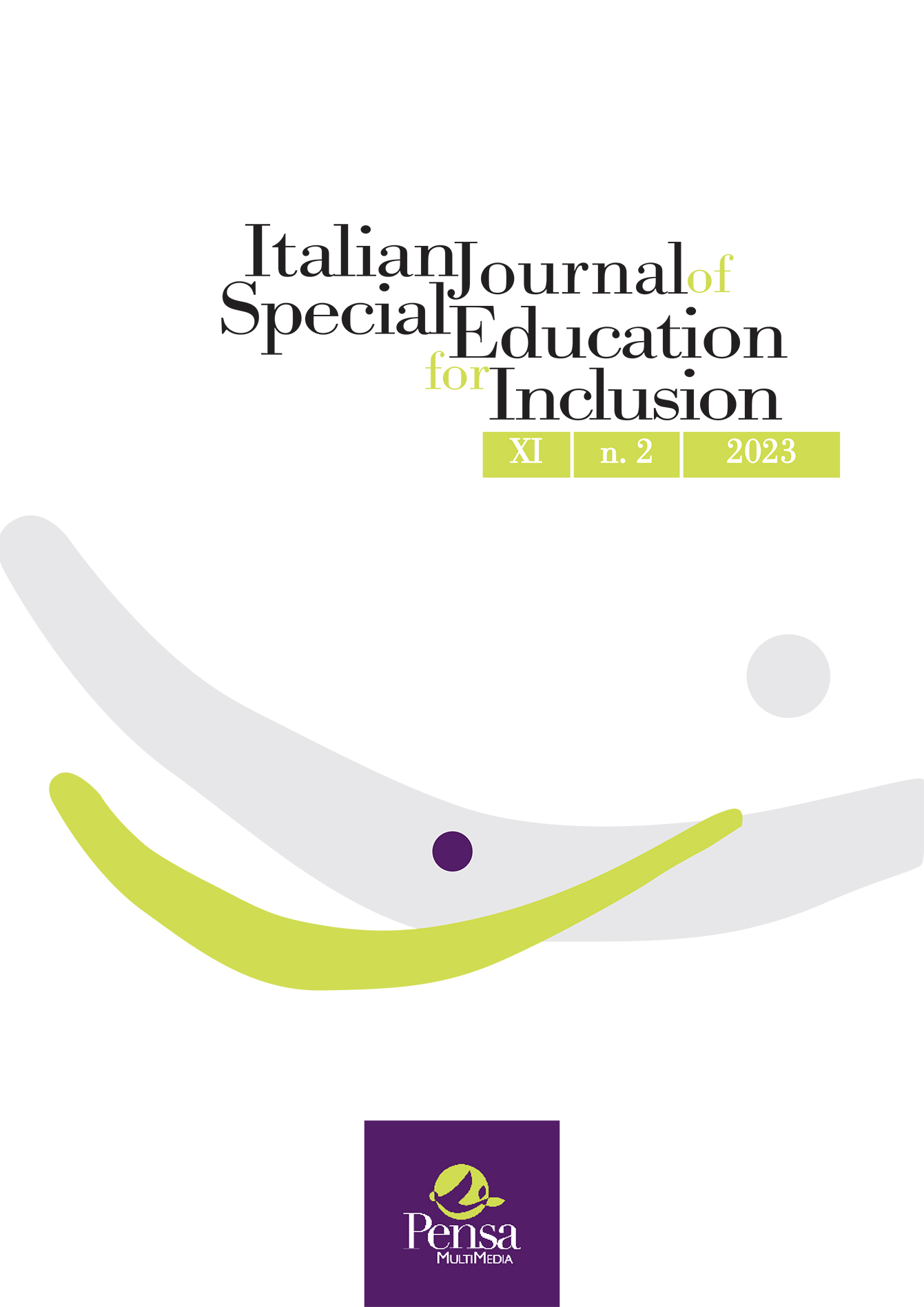Building capabilities and functioning for a pupil with autism spectrum syndrome
DOI:
https://doi.org/10.7346/sipes-02-2023-22Abstract
I propose here a reflection on some educational approaches adopted at school, for the inclusion of a pupil with autism with low non‐verbal functioning, that are inspired by the new model of disability, the capabilities model, and, in particular, by the psycho‐educational perspective of Wehmeyer's functional model of self‐determination that follows. It focuses, in particular, on the significant capacities and environmental arrangements to be developed and activated for each individual (thus removing in nuce the possibility of discriminating between people with and without disabilities), in order to create real functioning for full self‐determination, where it is the individual himself who decides what is important for himself and what is not, transforming in itinere the surrounding reality and being able to live according to his own essence, respecting others. The experience I am narrating stems from the question I asked myself as to what the contextual opportunities (including the structural dimension of the whole class) might be that allow the child with autism to be able to choose and practise alternative functioning to those imposed on him. When we speak of functioning, in this concrete case, we are referring to the domains of self‐determination belonging to the microsystem of the everyday life context.


